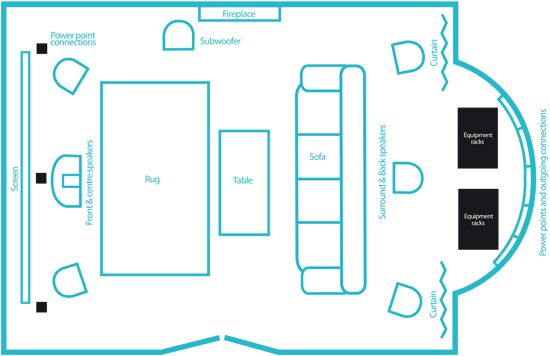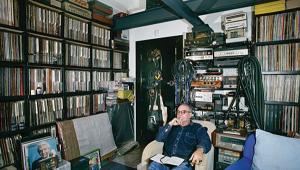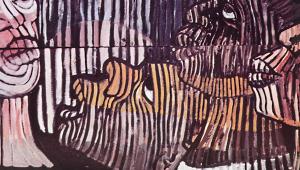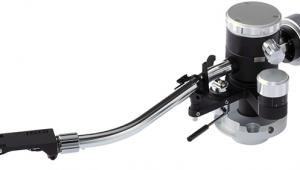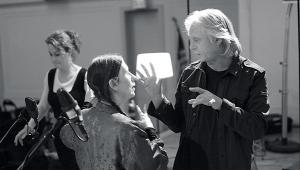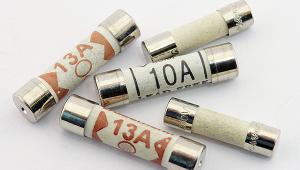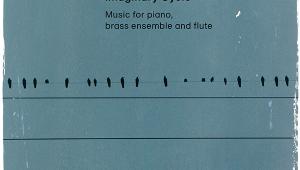Paul Miller

A contributor for 30 years and editor for the last 10, Paul Miller oversaw the return of Hi-Fi News & Record Review to its specialist roots and yellow border and re-established its technical prowess on the world stage. He's tested more hi-fi than anyone in the business. Not bad for an ex-organic chemist. Paul is also the President of EISA.
With several years of technical reviewing already under his belt, Paul's first investigative feature for Hi-Fi News, questioning the then-current craze for sticky foils and mystery oils, was published in 1987. 'This must be the only occasion that infra-red and NMR spectra have ever appeared in a hi-fi magazine' he laughs. But it was the beginning of a career in audio that would be marked by the use of investigative test and measurement to support and better understand the subjective experience.
'Career? I prefer to think of it as a journey driven by a passion for high quality music and movie sound reproduction. In addition to reviewing thousands of products, over the last three decades I've been involved in product design and production engineering, setting up test platforms in factories across the globe, while also growing a bespoke audio measurement solution from the ground up. I couldn't imagine trying to run a serious hi-fi magazine without this bedrock of experience, but then I'm no 9-to-5 jobbing editor. Working with the best contributors in the business also helps, I'm bound to say!'
So where did Paul's enthusiasm for high-end hi-fi begin? 'I come from the last generation that grew up without computers, games consoles, portable music players, mobile phones and other distractions. The music we listened to and the kit we bought or built pretty much defined the peer group. I had a couple of big Japanese direct-drive decks in my youth and pre/power amplifiers from Sansui and Hitachi but the desire for something better was fuelled by the hi-fi magazines of the late '70s. The need was reconciled by working evenings, weekends and holidays to save the steep entry fee. I went from starter hi-fi to the "high-end" of the day in one giant leap. My first serious loudspeaker was the KEF 105 "Dalek" – not bad for a chemistry student at Imperial College!
'This was just before the great turntable wars really kicked-off, but I remember the excitement of trying to compare the likes of Logic's DM101 and the original Pink Triangle with Linn's LP12 – such was the tribalism that no dealer stocked all the key models. In the end I bucked the trend, ignoring what I considered to be the implausibly brainwashed press of the day, and went for the Pink Triangle.'
HIGH-END FRONT END
'The combination with Helius, then new Orion tonearm and Technics EPC-205 pick-up was the most neutral, transparent and musically involving vinyl front-end I had heard, an opinion I felt disinclined to change even when my early reviewing career brought models like the Gyrodec, Source, Ariston, AR and others my way. But it was a love/hate relationship – I loved the simplicity of its acrylic platter, the Aerolam subchassis and easy-to-adjust suspension but hated the fact that something so ostensibly basic could find so many diverse ways to stop functioning. The reed switch, the power supply, the DC motor, the glue holding the lid together… well, perhaps some early PT owners will know what I mean. But the gain was obviously worth the pain because I stuck with the PT for well over a decade, upgrading the armboard, power supply, subchassis and tonearm en route.
'I was lucky enough to review the SME Series V (in the Superfi section of What Hi-Fi? that I originated in the mid '80s) and couldn't bear to be parted with it, particularly when teamed with the original Koetsu Red MC. What a front-end! I reckon more than a few "new" turntable manufacturers could learn a thing or two by revisiting what we already knew 25 years ago. I ran vinyl alongside CD through the 1980s and early '90s, reviewing hundreds of the silver disc players during this period. I've lost count of the players and transport/DAC combos I lived with, but the Theta transport/Data Basic, TEAC P-10/D-10 and Deltec PDM2 multibox DAC were real standouts of the time.
'I was also a great fan of the original Deltec DPA-100S pre/power combo with its four-wire cable connection, extending the amp's compensation right out to the speaker terminals. Not only did it offer an astonishingly taut and insightful sound but its external feedback loop meant it was uniquely suitable for loudspeaker cable tests – allowing us to hear the difference between "no cable" and "some cable", for example. Blind listening tests on 60 cables at a time – now that was fun!'
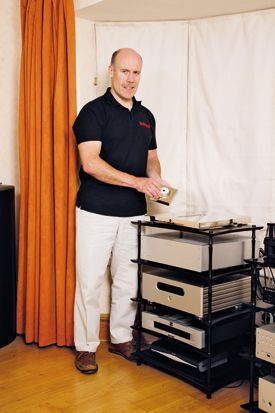
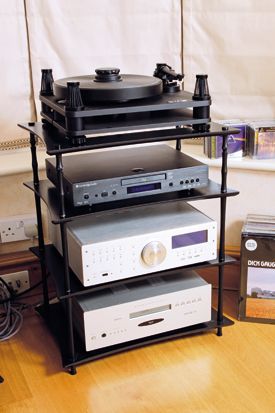
A CHANGE OF SPEAKERS
'I used the Audio Note AN-E loudspeakers throughout the '90s but they were simply not big enough to drive the room I have now. The B&W 802s took their place about ten years ago with a matching centre and 804s for the surround and back when the system is used in multichannel guise.
'I've always integrated my home theatre/multichannel music system with my two-channel system. It's all about achieving the best possible sound whether from vinyl, digital disc, HD server or BD movie or music disc.
'In truth I put my vinyl collection to one side in the early '90s when the initial flurry of true 1-bit (Bit Stream) DAC players and outboard converters were launched and offered so much promise. Some readers may remember my demo of a prototype 1-bit outboard Bit Stream DAC at the '89 Hi-Fi News Show – before any commercial product was available. Sadly the subsequent rash of PWM bitstream players broadly failed to live up to the initial impact of the first Philips-based technologies. That SAA7320 Bit Stream DAC was a very special chip, capable of an astonishingly tactile, almost holographic performance when implemented by the few designers who really had a grasp of this new "high speed" engineering.
'There were exceptions of course and I've still got the budget CDP-715E player from Sony that wiped the board back in the mid 1990s. Even now it still loads and plays faster than almost every modern machine. But then this was a true CD player, not a CD/DVD hybrid like virtually all silver disc spinners are today. Then again the golden age of CD started to crumble around the time Philips stopped making its swing-arm laser mech and astonishing SAA7310 decoder – that combo could track its way through a 3mm hole without muting!'
BACK TO VINYL
'Ironically, in more recent times I've moved away from CD in favour of SACD and BD formats as well as high quality vinyl – thanks in no small part to SME's fabulous 20/3 and the availability of superior LPs – while also embracing hi-res stereo and multichannel audio from a bespoke PC platform. This media centre was developed here about six years ago, with subsequent tweaks, encompassing wired and wireless multiroom streaming of audio and video using a custom ripper, drivers and hardware. The user interface was pretty novel for its time with album artwork thumbnails superimposed over pictures of the different rooms or zones. We even had a virtual keyboard for manual editing and the whole thing ran off a Sky remote that we'd butchered for the purpose. In those days the Freedb and Gracenote databases were available but without resource for album cover artwork. So we developed an automated but slightly leftfield method of trawling the web for artwork, for demo purposes only, you understand!
'A lot of the issues being raised by the audiophile community today about the impact of OS mixers and drivers on the delivery of high performance digital audio I'd necessarily covered off, in the late '90s, during the development of the multichannel QC Suite. These core software technologies were leveraged into the media server that I use today.
'Caching the audio into memory from a solid-state hard drive and feeding the entire platform from a specialised power supply are relatively basic "audiophile" philosophies but, along with robust software, are key to achieving the best sound quality.
"The chain is made considerably simpler by driving the server's 24-bit/192kHz digital output directly into the Devialet amplifier. While the Devialet is the most impressive two-channel amplifier I've ever enjoyed, it's not a lot of use for reviewing the analogue output of stereo CD players. For this and any multichannel players that pass through I use the S-1200 processor and S-1500 7-channel power amplifier from Krell, a combination that offers an awesome performance from a relatively compact package. Frankly, while I appreciate that a full-on 6.1 channel audio/HT system is simply not a practical proposition for most audiophiles, nothing gets you closer to 'being there' than an eyeball-popping BD music disc. It's a constant regret of mine that so few concert performances are available on Blu-ray, but who knows what the (streaming) future may bring?'
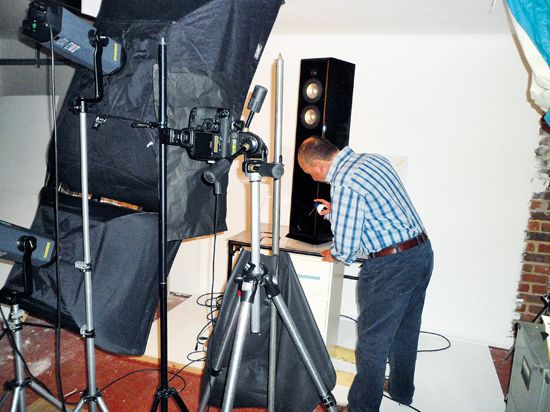
PARALLEL CAREER
Paul's comprehensive product experience is invaluable for cherry-picking the very best of the world's high-end for Hi-Fi News but we've barely touched on his USP – the only editor who's also a professional test equipment designer. So how did this parallel career take shape?
'Lab testing has been at the core of my reviewing from the get go. When I left Imperial College after six years of degree and post grad research I was at a fork in the road. Did I take up my position with the large chemicals company in its Innovations Division or translate the part-time, late night writing of the previous three years (funding the hi-fi habit while at university) into a full-time occupation? Well here I am. I took out a hefty bank loan and bought a lot of big brand test equipment from the late Hugh Ford's estate and, latterly, Angus McKenzies's archive of test LPs.
'I was used to analysing complex spectra so getting to grips with audio testing – which was a clunky process in those days – was an entertaining challenge. My aim was to deliver complete reviews, not just my impression of a product's sound quality, functionality and quirks but also a detailed understanding of the underlying technology and its impact on performance.'
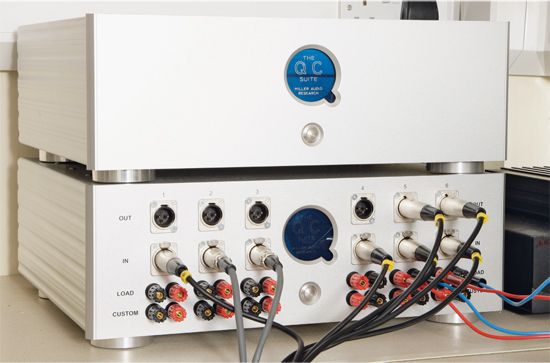
COMMERCIAL DESIGN
'Thirty years later and I've now run more advanced lab tests on more kit than any other reviewer in the world. I've a lab archive that stretches from cables, blank tape, FM and DAB tuners, cassette decks, turntables, arms and cartridges, pre/power, integrated and AV amplifiers and processors of every function and flavour, loudspeakers, CD/SACD/DVD and BD players, transports and DACs through to many obsolete formats including DCC, Minidisc, CD-I, DAT and DVD-A. But the move into commercial test design really happened by accident.
'By the early '90s I was becoming increasingly frustrated by the limitations of conventional test gear. I had ideas for new tests that simply couldn't be explored so I learned the programming skills to create custom instruments in software. After all, that's what a spectrum analyser comprises: an A-to-D front-end to acquire the audio signal followed by a bunch of software to perform the FFT and other post-acquisition analysis. The more I learned, the more I could push at the boundaries.
'I read various AES papers that proposed test signals to aggravate jitter in digital systems. These were neat ideas, but to derive a meaningful figure for overall jitter you'd still have to manually isolate and identify each sideband from spectrum analysis, correlate the phase and decide which type of jitter mechanism applied for each pair of peaks.
'This was not a practical proposition for the busy engineer so I set about creating a program that would automatically locate and identify the nature and source of the sidebands and apply the appropriate maths. I also utilised a specific set of window coefficients to distinguish between phase noise and spectral broadening. A complex spectrum that might have taken a day or two to analyse could now be elucidated in a fraction of a second. I won a gonk for this – the European Test Innovator of the year. Manufacturers worldwide wanted the tool, which I provided, helping to reduce jitter and improve the sound quality of domestic CD players over the next year or so. Being a critic can often be a negative experience, so this was very satisfying.
'Fifteen years later and this interpretive analysis has not been duplicated anywhere else, though some comical attempts to mimic the jitter plots we see in Hi-Fi News every month have not escaped my notice. Beware imitations, dear readers! The intervening period has seen the development of the QC Suite, a multichannel audio analyser that combines analogue and digital testing sequences with statistical process control (for fault prediction in factories) and very high levels of automation. It's a one-stop solution and the source of everything we discover in our lab reports.
'Because it's a modular design, the QC Suite grows to accommodate new technologies. It's the reason why we're the only mag to produce in-depth test reports on USB and hi-res networked audio products, for example. But it's not all digital, we've even developed a cumulative decay program to analyse the resonant behaviour of tonearms. These are the new 3D plots seen over the last year in Hi-Fi News. So we don't need to invest in new test gear to cater for each new audio paradigm, we simply set about inventing a solution in preparation.
I've lost count of the number of times we've uncovered an underlying design or QC issue that, to the best of my knowledge, has escaped the attention of every other publication. It seems to happen almost every month but it reflects the difference between a guy that's been trained to push a few buttons on a commercial analyser and a professional test designer. Look at it this way: most of us can microwave a cup of coffee but precious few can design the microwave and produce a gourmet meal. In a nutshell, if fellow hi-fi enthusiasts still believe that all magazine testing is equal, then rest assured that ours is more equal than others.'
A HUGE PUZZLE
And the search for correlation with sound quality, are we closer today than ten or twenty years ago?
'Most certainly. But the task is still a huge jigsaw puzzle. It's easier to predict sound quality with front-end components like pick-ups and DACs, less easy with amps because they're influenced by what's connected both fore and aft. Speakers? I'm happy to leave these with Keith Howard who's already forgotten more than most reviewers know about the subject.
'But correlation will never be absolute until you can factor in the tastes and expectations of the reviewer. I always lab test our review products first, not only to reject those with fatal flaws but also to decide which of our guys will have the greatest empathy with its performance. Two reviewers may have separate reactions to the same product, but the lab data remains the same. It's not about some notional idea of "good" or "bad" measurements but how the various facets of performance interact.
'Like I say, reading the numbers is like trying to complete a complex jigsaw when you've only a rough idea of the picture and absolutely no idea of how many pieces are missing. But will we ever drop the last piece in place? I believe so, but not necessarily in my lifetime!'
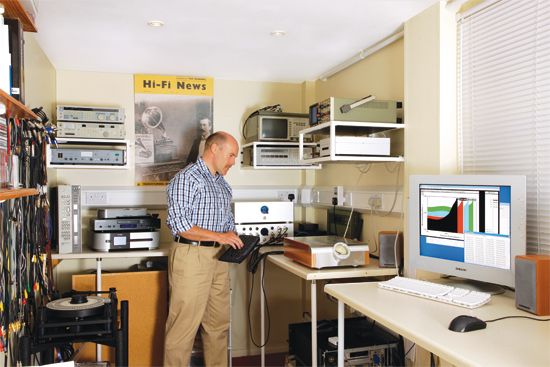
THE LISTENING ROOM
Dedicated to reviewing all audio from 2.0 to 6.1 channels and video up to Full HD, Paul's media room includes hidden interconnect and speaker cabling for all seven channels, terminated at each speaker location. The room has independent ring main feeds for each position to support remote monoblock amplifiers (when reviewed). The motorised screen and room lighting are computer controlled, as is the gas fire!
